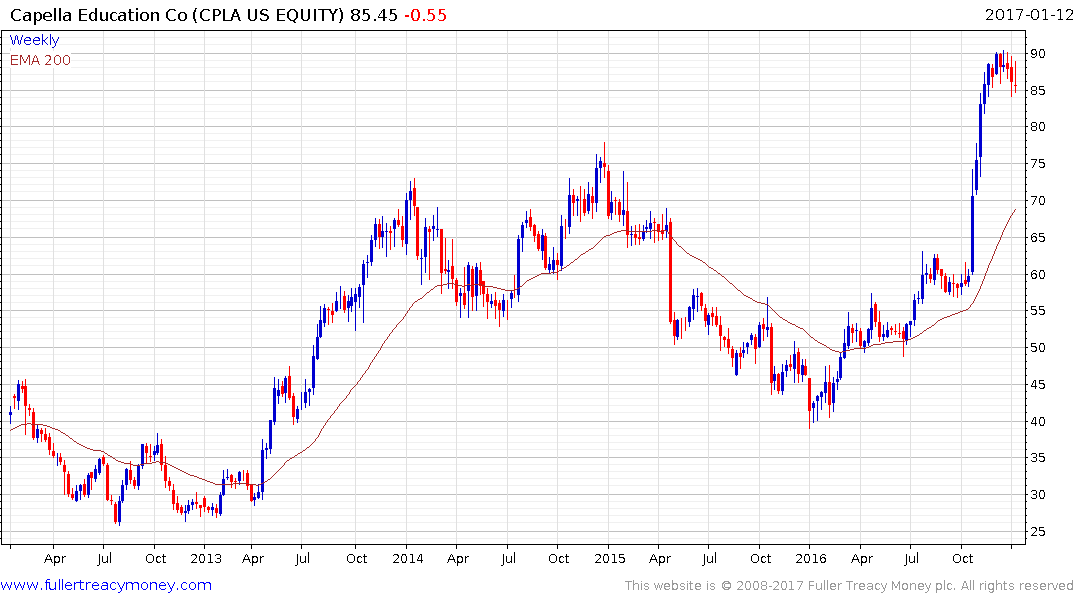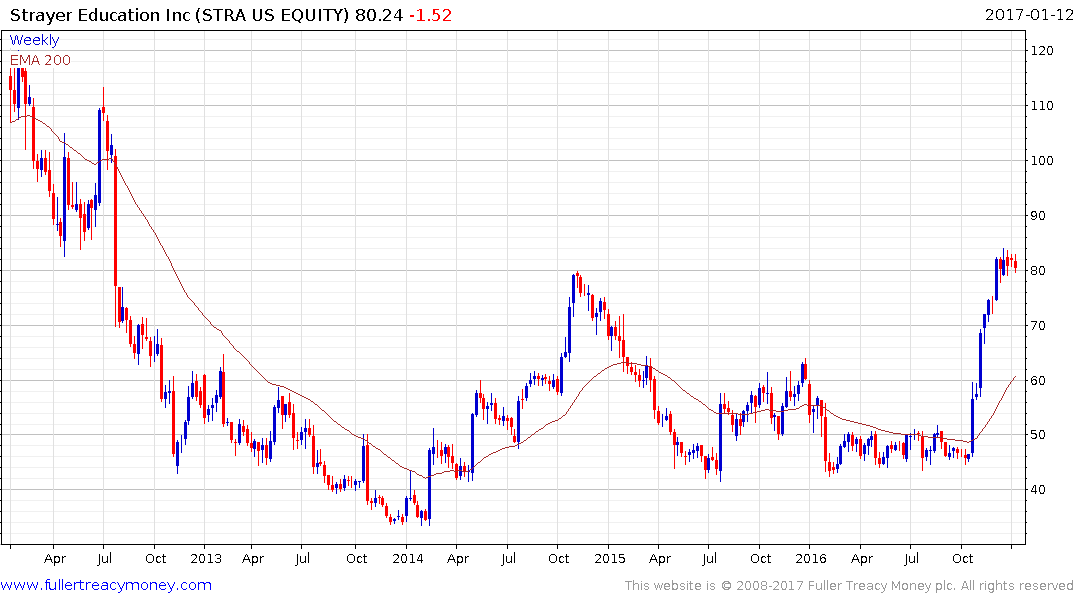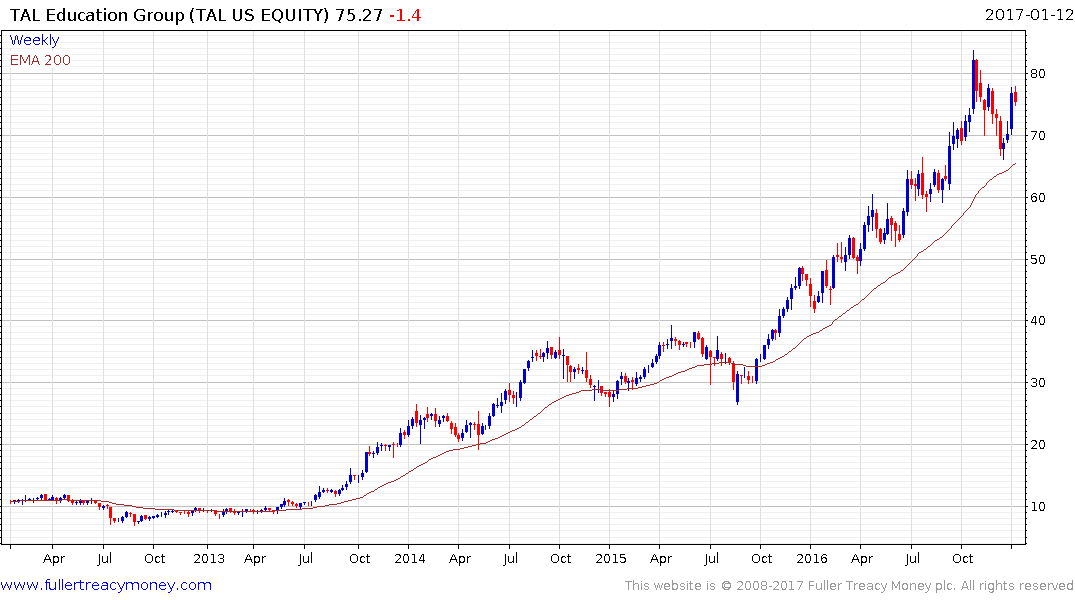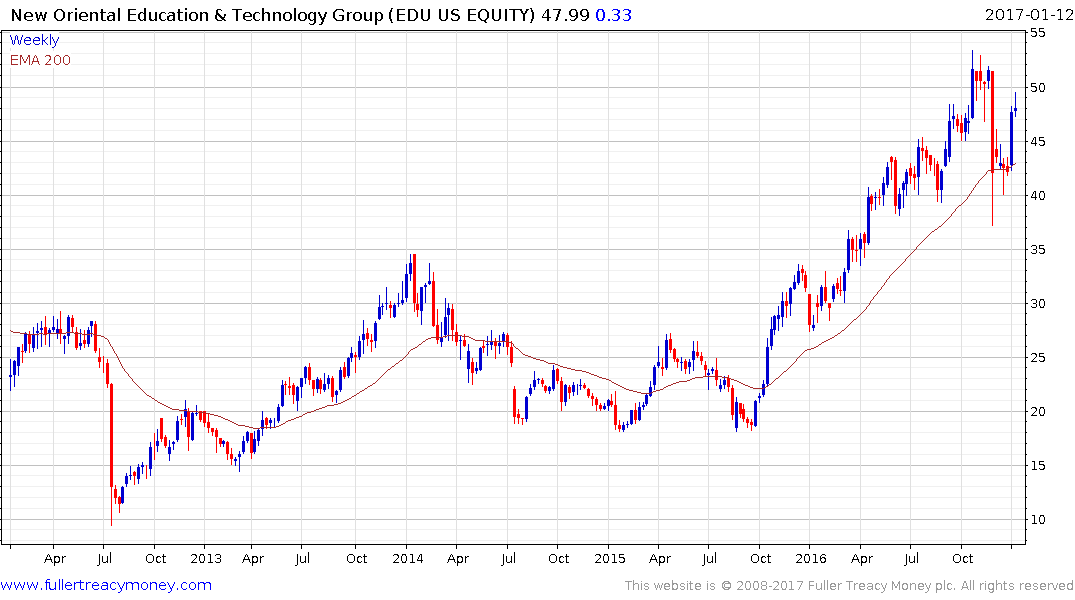The Robot Rampage
This article by Chris Bryant and Elaine He for Bloomberg may be of interest to subscribers. Here is a section:
Even an America-first advocate like Trump should be concerned by this because people joining the middle classes in Vietnam, Mexico or Egypt will be potential customers for U.S. goods exporters.
Why might it happen? Back when the U.S. middle class flourished after World War II, factory automation was expensive. Robots were limited to only a few sectors -- mainly the auto industry -- and those automatons weren’t that sophisticated. Wages rose thanks to improved productivity, but workers weren’t completely made redundant by the machines.
Poorer countries in Asia or Africa probably won't be that lucky. Today's robots are far more capable, are being deployed in a wider range of industries, and are cheaper too. That leaves less room for wages to rise before humans are priced out of the labor market. More low-cost automation also means manufacturing can be re-shored to developed economies.
German robot maker Kuka AG, acquired last year by China’s Midea Group Co., estimates a typical industrial robot costs about 5 euros ($5.28) an hour. Manufacturers spend 50 euros an hour to employ someone in Germany and about 10 euros an hour in China.
When I spoke to KP Reddy, the CEO of Softwear, a year ago the biggest takeaway was how he described the strong interest they were receiving from major clothing manufacturers in Asia. They want to be fully automated within the decade so they are investing now.
Low wage industrialisation has been one of the primary contributors to economic development in the last century. By creating jobs for people that pay been than subsistence farming billions of people have been lifted out of the poverty. Since many of the workers in these factories are women we can also say without irony that industrialisation is one of the first steps towards women’s suffrage. Automation represents a serious threat to that particular path to personal development.
So far some of the most talked about potential solutions have been to experiment with universal basic income. I personally can’t see how that would do anything other than foment inflation since if you give people more money to spend without increasing the supply of basic resources prices rise. I have a lot more sympathy with reducing the cost of education through automation and creating different learning paths for people of different aptitudes. However that is not nearly as popular as yet another form of helicopter money.
Coursera, Udacity and edX are among the best known massive open online course providers (MOOCs). The results from such courses are mixed because completion rates are patchy when students do not have a strong financial interest in completing the course. Nevertheless, these look like models that need tweaking rather than outright reform to encourage students to participate on a larger scale. Here is a link of a MOOCs

Capella Education rallied strongly following the US election and is susceptible to some consolidation of that gain.

Strayer Education rallied in a similar manner.

TAL Education Group offers afterschool tutoring in China. The share remains in a generally consistent medium-term uptrend and a sustained move below trend mean would be required to question potential for continued upside.

New Oriental Education & Technology Group has a similar pattern.
This video highlighting the prototype of Waverly Labs’ universal translator ear buds if taken to its logical conclusion could help improve the ability of emerging countries to compete by removing the language barrier.
Back to top

